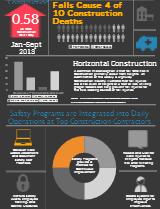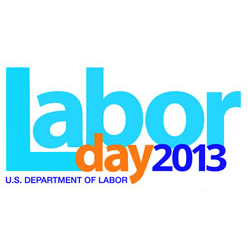At the beginning of each fiscal year, your insurance agency will provide you with your Experience Modification Rate, or EMR. This value serves as a multiplier to calculate your annual workers’ compensation insurance premium. EMR may lower or raise your premiums based on the history of safety and injury claims that your company exhibited over a three year period. It is also the most direct method of calculating a return on investment on work safety investments.
By improving work safety policies and following preventive practices that lower injury loss rate, business can save thousands of dollars annually on premium reductions.
Work Safety Policy EMR Strategy
The most direct way to lower your EMR is to institute a Work Safety Policy that is supported and promoted throughout the organization. Work safety policies build cultural safety values and institute programs, incentives and controls that improve processes and cross-departmental knowledge of safety.
Here are some ideas from a work safety policies at successful companies.
- Develop a Safety Committee to assess and improve communication about safety policy and strategic EMR initiatives
- Create a Return to Work Policy to encourage workers to return when able and reduce the length of claims
- Initiate Job Classification reviews to communicate job responsibilities to employees and improve expertise
- Implement strategies to generate a Safety Culture including Management Involvement, Incentive Plans, and Injury Claim packets with helpful information
Equipment Work Safety Policies for EMR
In support of work safety policy, effective management of equipment can further help reduce injuries and lower EMR. Ensure that equipment is operating properly and develop an Out of Service policy to inform team members how to handle malfunctioning equipment. Conduct work hazard analyses to identify equipment to reduce injury risk. Input from the employees that actually operate the equipment is highly valuable when developing policy. And remember that each work site or piece of equipment is unique and thus may require custom access solutions.
The above article was originally published in the January 2014 IAS Trucker Newsletter. Sign up today to subscribe and receive our monthly Work Safety newsletter.




